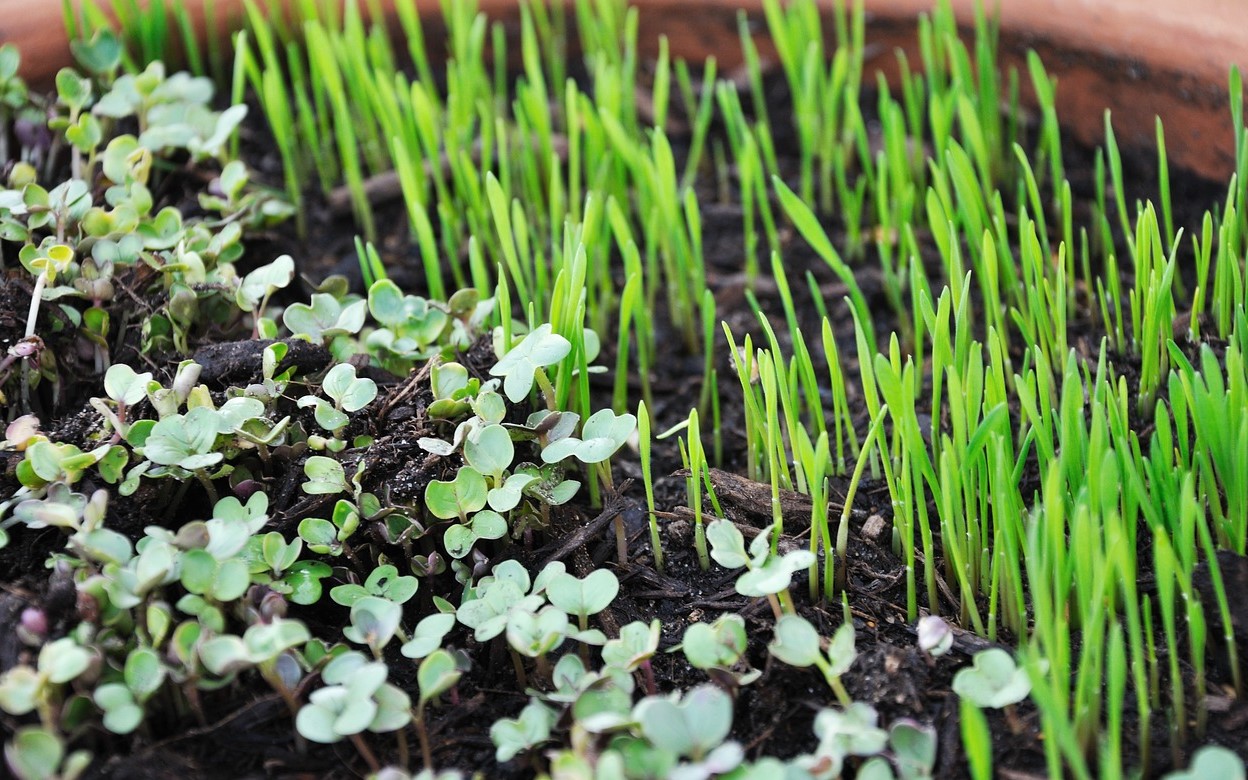By Carol Wagstaff, University of Reading
Many of us germinated cress seeds on a bit of wet tissue at primary school, giving us a first introduction to edible microgreens. Recent interest in more diverse ways of getting flavour and nutrition into the vegetable components of our diets has increased the focus on the potential these crops have to offer.
There are now a growing number of horticultural businesses operating at a significant commercial scale to deliver a wide variety of microgreens to the market. In most cases, sales are to the food service industry, rather than retail, meaning you are likely to find them in your sandwich or as garnish on a restaurant dish. Microgreens are simply the cotyledons, or seed leaves, that first emerge from a seed when it germinates. If the seedlings were left to mature they would eventually become full-sized leafy vegetable and herb crops.
These miniature leafy salad crops pack a lot of nutritionally beneficial and flavoursome goodies into a small space. Seedlings of plants such as beetroot, radish, rocket, basil and coriander come in many shades of red and green. They give a real zing to a dish with their distinctive flavours and contain biologically active compounds, such as glucosinolates and polyphenols, that are known to reduce the risk of some cancers and cardiovascular disease.
Recent research has shown that the “bioavailability”, that is, the ease with which the human body can access all the nutrients locked up in the plants we eat, is better in some microgreens than others. Red radish sprouts had higher bioavailability of polyphenols than red cabbage, broccoli and white mustard, even though the concentrations found in the radish were lower. These findings show just how important it is for us to understand the digestibility of the food we eat, and not simply the concentration of different compounds within it.
Although microgreens are more nutrient-dense than their fully grown relatives, the portion sizes offered still tend to be very small. While microgreens are still treated as a garnish instead of a valuable component of a diet, people will not get as much of the nutritional benefits as they could.
Grown indoors
Microgreens can easily be grown indoors and don’t require much space. Indoor growing has its challenges, as the energy demand is often high to provide the lighting and temperatures that the plants need. However, if the energy used is from renewable sources, indoor growing becomes sustainable.
Researchers in Canada also discovered that using continuous LED lighting both increased the yield of microgreens and reduced the energy costs associated with production compared with using traditional light/dark cycles.
Microgreens are harvested within days of germination, meaning that they don’t need additional fertiliser supply, and they suffer very few problems of pests and diseases that affect plants grown to greater maturity because they are grown in such clean indoor environments. All they need is a bit of water to sustain them.
However, the indoor growing environment also offers the potential for fortification of microgreen crops, ensuring that they are even more rich sources of the nutrients that we are often deficient in. A 2022 study from the Slovak University of Agriculture in Nitra, showed that a range of different varieties of microgreens could be more than 100-fold enriched with selenium by including it in the growing medium. Selenium is an essential nutrient that lowers the risk of developing cancer.
The biggest challenge that remains is to improve the shelf-life of these seedlings. Many of the things that make them attractive as crops, such as tender texture and growing in a highly protected environment, make them unable to withstand the conditions they are exposed to after harvest. The rise in popularity of these crops will encourage plant breeders to invest in developing varieties that are specifically adapted to cultivation as microgreens.
The low-input, indoor-friendly production of microgreens provides opportunities to have leafy veg grown in towns and cities, or even in people’s own homes. These short supply chains mean that the product reaching people’s plates is fresh and of good quality.
When production is more local to the point of consumption people feel more connected to their food supply and are more likely to incorporate these sustainable, healthy and tasty little leaves into their diets.
Carol Wagstaff, Research Dean for Agriculture, Food and Health, University of Reading
This article is republished from The Conversation under a Creative Commons license. Read the original article.























Leave a Reply